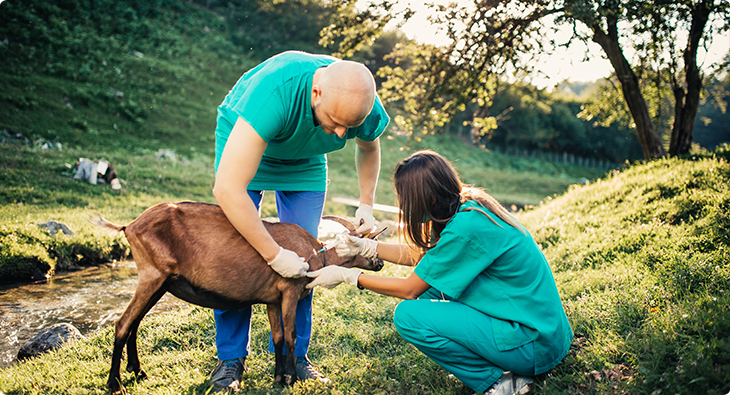New white paper reviews a host of recent studies based on xMAP® Technology

When Luminex scientists first created xMAP® Technology back in the 1990s, they couldn’t possibly have imagined the vast array of applications for which it would eventually be utilized. We are continually impressed with our users’ creativity and scientific vision as they bring multiplexing technology to numerous new research areas.
In this recent white paper, Multiplex Methods in Veterinary Medicine and Agriculture, our team explores several ways xMAP-based assays are used in veterinary medicine and agricultural science. There are a wide range of applications in this research area alone—including livestock and crop production, food and water safety, translational research, companion animal medicine, zoonotic disease, wildlife and ecosystem health, and more.
Adaptable, efficient multiplex assays
While this is a broad landscape representing enormous diversity, there is a common thread across these applications: they are all characterized by a need for highly accurate measurement of biochemical processes. xMAP Technology powers multiplex assays that can detect up to 500 analytes in a single, low-volume sample, making them more time and cost-efficient than traditional immunoassay methods. Specifically, in veterinary research, the ability to use small input volumes makes it possible to study birds and other small animal species.
The flexibility of xMAP Technology is one of the reasons it’s well-suited to so many different research uses. Along with our partners, we offer an extensive menu of commercially available assays, as well as the option to design custom assays for novel research applications.
Below are just a few examples of how xMAP is being used across veterinary and agricultural research:
- Studying host immune proteins and infectious agents in veterinary research
- Detecting foodborne pathogens, hormones, antibiotics, and other drugs in food safety testing
- Measuring mycotoxins in feed
- Differentiating viruses in plants
- Evaluating water quality and other environmental substrates
Multiple studies with reliable results
The studies described in the white paper show how widely adaptable xMAP-based assays are, supporting research across multiple fields.
These studies also reveal how xMAP-based assays can bridge the gap between veterinary medicine and human health. Using xMAP Technology, investigators are determining appropriate animal models for human disease.
xMAP Technology is open-architecture—reducing time, labor, and costs compared to traditional methods—delivering reliable answers to complex questions. It offers the versatility to perform a wide range of multiplexing assays, from proteins to nucleic acids, on a single platform.
Download our free white paper to read more about how scientists are using xMAP-based assays to enhance their research in veterinary medicine and agricultural science.
Related Content:
- Getting Started with xMAP® Technology [Video]
- Browse 1,200+ Partner Kits with xMAP® Kit Finder [Online Tool]
- xMAP® Cookbook to Design Your Own Assays [Download]
- View the xMAP Webinar Blog Series [Video]
